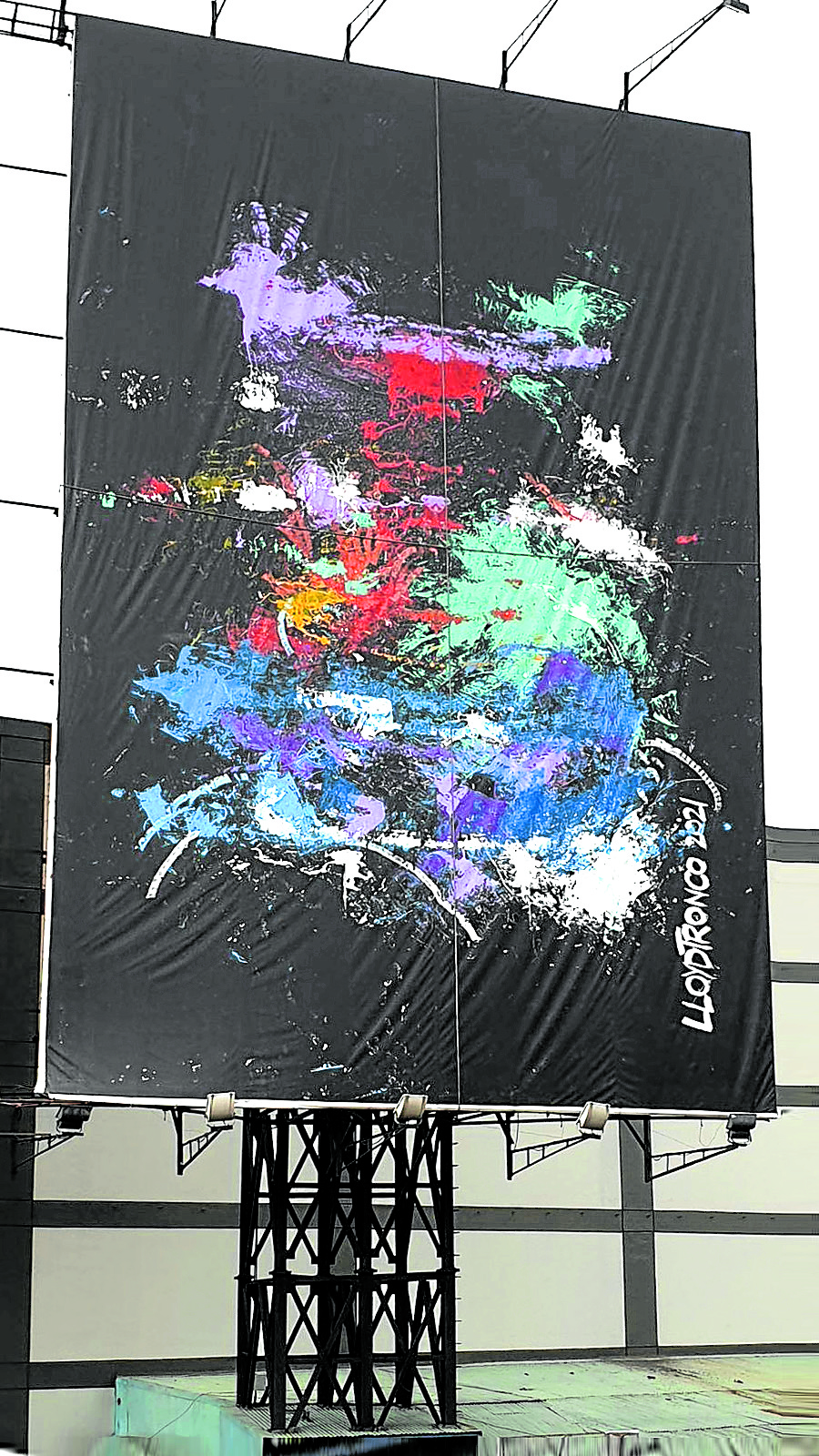
Lloyd Tronco has always described himself as an advertising guy, having worked with McCann Erickson for close to four years. Despite his evident success, something bigger seemed to be calling out to him.
“I’ve always wanted to pursue the arts,” Tronco says.
Perhaps being exposed to the family business his father Larry started in Bacolod instilled a sense of creativity in him. A contemporary of Cesar Legaspi, Arturo Luz and Jerry Navarro, Larry pioneered and ran a successful billboard operation—still hand-painted at the time.
But Lloyd’s lifelong dream has always been to become an architect. Unfortunately, his father died while Lloyd was in his first semester at the University of the Philippines in Diliman. As a result, Lloyd felt the need to go back to Bacolod to help his mother run Tronco Advertising Co. and subsequently enrolled at La Consolacion College, where he shifted to fine arts.
“I had decided to become an architect rather than an artist because I felt that my dad was so big, and I recognized then that I could not fill those shoes,” Tronco says. “The turn to art happened when he passed away… the architecture dream had to be abandoned due to necessity.”
Running the family business came naturally to Tronco, but he found himself back in Manila after being recommended by Jun Bartolome, a colleague of his father at J. Walter Thompson, to advertising giant McCann Erickson. The story goes that with the advent of tarpaulin printing in the 1990s, advertising agencies began to recognize billboards as a profitable medium beyond television, print and radio.
“At the time, advertising agencies did not touch billboards because there was no money to be made,” Tronco says. “The monthly rent would range from P8,000 to P10,000 only, and an ad agency would normally make 15 percent so there was no sense in making P1,500. But now it’s by the millions.”
A big agency like McCann Erickson that had experts on radio, television and print needed a specialist for billboards.
“They called me while I was in Bacolod and asked me to join them as an outdoor advertising specialist from 2001 to 2005,” Tronco said.
After his stint there, Tronco started his own business in Manila as a media broker for billboard ad spaces where he continued to experience relative success. And yet, at the back of his mind, Tronco still felt the desire to paint.
For National Arts Month
While he has had solo art exhibitions in the past, Tronco felt somewhat restrained by his office job, whether it was running their family business or working at an advertising agency.
So when the stars finally aligned, Tronco, now married with two kids, decided to make his mark by unveiling recently the largest abstract work in the Philippines. Measuring 62 feet high and 40 feet wide, the painting can be seen across the location where two Edsa revolutions occurred.
“Something of scale is not really difficult for me,” Tronco says. “I did a mural at Philippine Science High School that was used during our commencement exercises, and I’ve helped out in the backyard painting billboards. It’s just that everything fell into place, the space was vacant and there was a tarpaulin of that size that I could use.”
The artwork “Alab ng Sining” uses a black background with an explosion of colors primarily in various shades of blue, purple and red. Tronco bore all the costs of the project out of his own pocket, including the materials and the space.
He adds that this is his way of celebrating National Arts Month, and so the timing couldn’t have been more appropriate. The work is best seen on the southbound lane of the Edsa-Ortigas flyover.
The surface area is 230 square meters, and to complete it, Tronco used 10 gallons of acrylic paint. With the help of four people, Tronco spread out the vinyl canvas outside his home in Mandaluyong City. It took eight people to put up the acrylic-on-vinyl artwork and though the whole process took them a week, Tronco says the planning and logistical strategy took months.
And yes, the artwork is for sale.
“I have partnered with Kalipay Negrense Foundation to be the beneficiary of half of the sale of the artwork,” Tronco says.
Kalipay Negrense Foundation Inc. is a nonprofit foundation working for the causes of disadvantaged children—the homeless, abandoned, neglected, malnourished, physically and sexually abused, victims of child labor and trafficking, and foundlings.
For Tronco, who is looking to explore themes of peace, hope and positivity in his works moving forward, this installation signals his transition into being a full-time artist. So if the Edsa Ortigas skyline is a little more colorful these days, credit it to the man who decided to go larger than life in pursuing his dream of the arts. —CONTRIBUTED